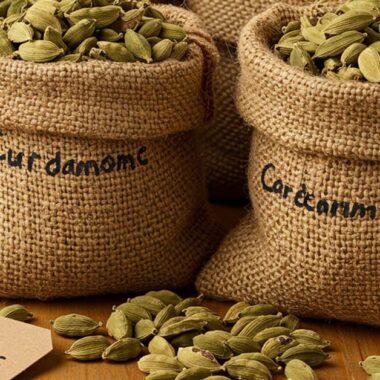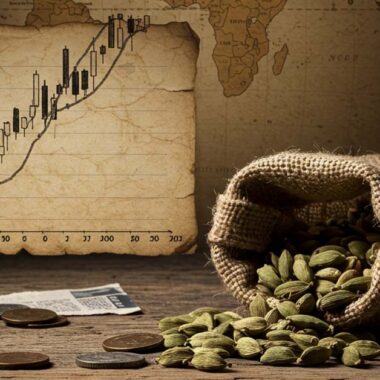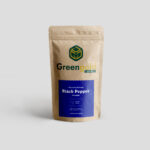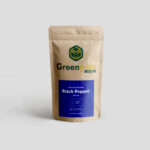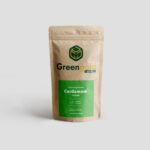Cardamom is one of the most sought-after spices globally, prized for its unique aroma, flavor, and numerous health benefits. However, as it travels from the farm to the consumer, the spice goes through various stages of processing, distribution, and sale. A significant part of this journey involves middlemen, the key players who facilitate the movement of cardamom from producers to consumers. But what role do these middlemen play in the cardamom supply chain, and how do they impact the price, quality, and availability of this valuable spice? Let’s explore! 🌱📦
🌍 What Are Middlemen in the Cardamom Supply Chain? 🤔
Middlemen are individuals or companies that act as intermediaries between cardamom producers (farmers) and consumers (wholesalers, retailers, or end-users). They include:
- Traders: Individuals who buy cardamom directly from farmers or cooperatives and sell it to wholesalers or export companies.
- Wholesalers: Larger entities that purchase large quantities of cardamom and distribute it to retailers or smaller businesses.
- Exporters: Companies that buy cardamom from domestic suppliers and sell it in international markets.
- Retailers: These can be online sellers, grocery stores, or specialty spice shops that sell cardamom to the end consumer. 🏪📦
These middlemen are essential for ensuring that cardamom reaches a global market, but their involvement also adds complexity to the supply chain. 🚚
🚜 How Middlemen Impact Cardamom Farming and Pricing 💵
1. Price Setting 💰
Middlemen play a significant role in determining the price of cardamom. The prices farmers receive for their crop are heavily influenced by the middlemen involved. Here’s how:
- Demand and Supply: Traders and wholesalers determine the prices based on supply and demand. If there’s a high demand for cardamom and a low supply due to weather conditions or crop failures, middlemen may raise the price to capitalize on the scarcity.
- Markup and Commission: Middlemen add their own markups to the price, which means farmers often receive only a small portion of the retail price. The final cost to consumers is usually much higher than what farmers initially receive for their cardamom. This system can create a profit gap between farmers and the final sellers. 📈💵
2. Market Access and Reach 🌍
Middlemen provide farmers with market access that they may not have on their own. Cardamom is a globally traded spice, and it can be difficult for small-scale farmers to sell directly to international buyers. Middlemen bridge this gap by:
- Connecting Farmers to Larger Markets: They help farmers reach markets that would otherwise be out of their reach, such as international export markets or large wholesalers.
- Risk Reduction: Middlemen take on the financial risks of fluctuating prices and market uncertainties, thus shielding farmers from immediate losses during price drops or oversupply issues.
3. Quality Control and Sorting 📏
Middlemen often oversee the quality control of cardamom before it reaches the consumer market. This involves sorting and grading the cardamom pods based on size, color, and aroma. While this can ensure that consumers get high-quality cardamom, it can also add costs to the product, as the sorting process requires additional labor and facilities. Quality control also impacts the price, with higher-quality cardamom demanding a premium in the market. 🌟🧴
🛠️ Challenges Created by Middlemen ⚠️
While middlemen play a crucial role, their involvement can also create several challenges in the cardamom supply chain:
1. Profit Inequity for Farmers 🏚️
Farmers often receive a smaller share of the final price of cardamom, especially in small-scale farming. Many cardamom farmers face difficulties when middlemen extract large margins while farmers bear the full cost of cultivation and risk. This inequity can reduce the motivation for farmers to continue producing cardamom at a sustainable rate, especially if prices are low during a particular season. 📉💔
2. Price Volatility 📉
The price of cardamom can be volatile due to the intervention of middlemen, who may buy large quantities at low prices and sell them for higher rates during periods of high demand. This creates instability in the market, where both farmers and consumers experience fluctuations in price. 🌪️
3. Lack of Transparency 🔍
In some cases, the presence of multiple middlemen in the supply chain can lead to a lack of transparency in how cardamom is priced and marketed. Farmers may not always know how their product is being sold or at what price, making it difficult to gauge the fairness of transactions. This issue is especially problematic when farmers rely on middlemen to navigate the market without understanding how prices are set or what portion of the price they are entitled to. 💼❓
💡 Possible Solutions for a Fairer Cardamom Supply Chain 🌱
While middlemen are essential in connecting cardamom farmers to the global market, there are steps that can be taken to create a fairer, more transparent system for all stakeholders:
1. Farmer Cooperatives 🤝
Cooperatives can help farmers bypass middlemen and sell their cardamom directly to exporters or even international buyers. By pooling resources, small-scale farmers can increase their bargaining power, access better pricing, and reduce the impact of middlemen on their profits. Cooperatives also help maintain quality standards and ensure that farmers receive a fair share of the revenue. 🌾💪
2. Transparency in Pricing 📊
The cardamom industry would benefit from greater transparency in pricing across all levels of the supply chain. This could involve digital platforms where farmers can track the journey of their cardamom, ensuring that they understand the pricing structure and receive fair compensation for their crops.
3. Direct-to-Consumer Sales 🛒
As online platforms become more common, direct-to-consumer sales could be another way to minimize the role of middlemen. Some cardamom farmers are increasingly using e-commerce websites to sell directly to consumers, ensuring better prices for both the farmers and the buyers. This route cuts out multiple layers of middlemen and gives farmers more control over their profits. 💻📦
🌿 Conclusion 🎯
Middlemen play a vital role in the cardamom supply chain, acting as the bridge between farmers and consumers across the globe. They help provide market access, price stability, and ensure quality control. However, the downside is the profit disparity and lack of transparency that can harm farmers’ earnings. By embracing cooperatives, direct-to-consumer sales, and pricing transparency, cardamom farming can become a more equitable and sustainable industry for everyone involved. 🌱💡

